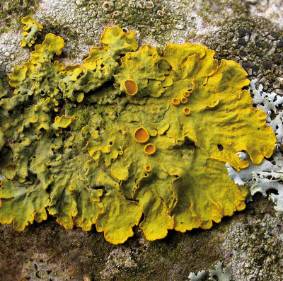Today the studio was taken over by lichen. Yes, lichen.
The first question for me (embarrassingly) was 'what are they…or it?' Turns out, pretty cool.
Pat Wolseley who works in our Botany department explained that lichens are actually two types of organisms living together, a fungus and an alga. They have managed to carve out an existence by working together in a symbiotic relationship. The fungus makes the body that protects the alga and the alga provides the food for the fungus. Who said nature is red in tooth and claw!
Fun fact of the day No. 2, lichens are hardcore. They have been found everywhere from the cold arctic and hot deserts to rocky beaches and inner-city gravestones. Not only are some very tough, others are very sensitive to air quality and this makes them perfect when it comes to monitioring air pollution.
In simple terms, if you see this fluffy greenish beard lichen on trees (Usnea florida) you can be sure the air is clean or getting cleaner. However, if you find trees and stones covered with the golden shield lichen (Xanthoria parietina) there is a lot of nitrogen about.
Image caption: Usnea florida (above) and Xanthoria parietina (below)
Now you can tell the difference why don't you get involved in the OPAL air survey? Join the hundreds of people logging on and helping scientists answer questions about the quality of the air we breathe.
To help scientists collect data on the air quality in your local area visit http://www.opalexplorenature.org/
Happy surveying!




